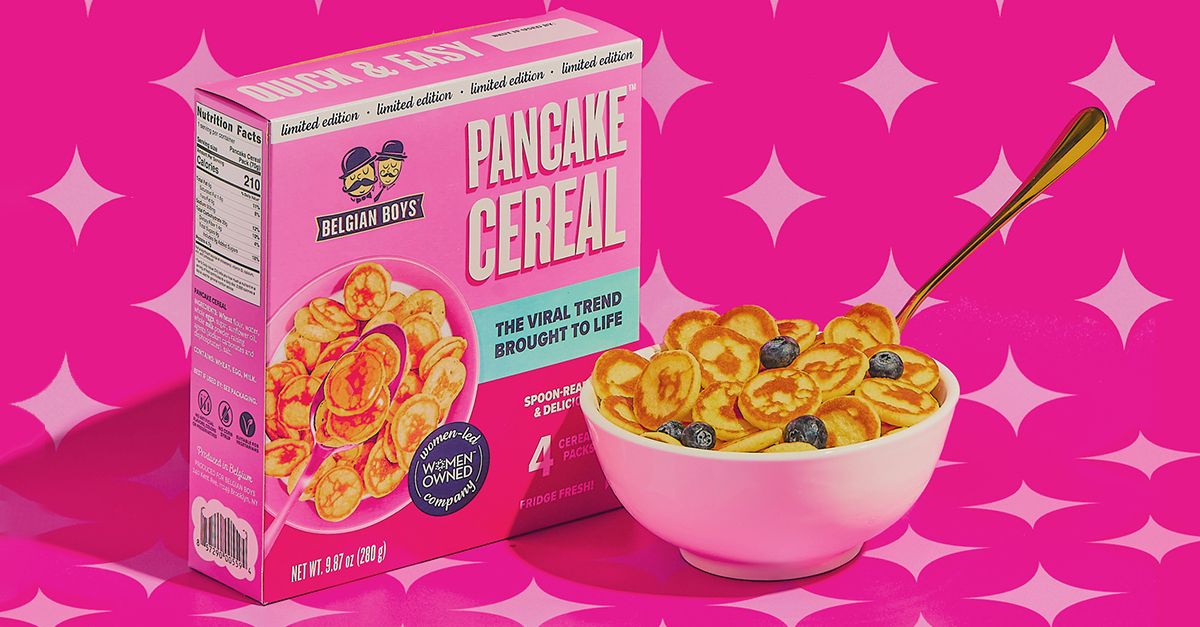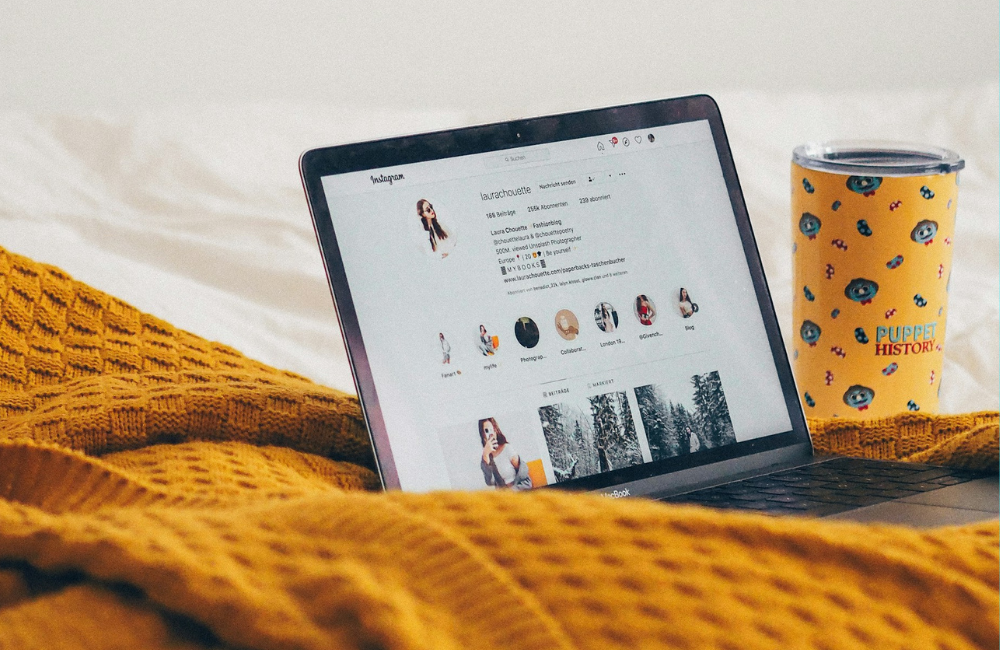
I Launched a New Product Based on a Viral TikTok Trend. Here’s Why It Worked—and How It Changed the Way I Do Business Forever
This founder created a product based on a viral social media trend—to great success. Learn how she did it and what it’s taught her about product development moving forward.
CEO of Belgian Boys
As a breakfast and baked goods company, innovation in my industry typically comes in the form of launching a new flavor or a line extension to a product we already offer. But, when my team saw the #pancakecereal trend taking TikTok by storm during the height of the pandemic, we felt we had to get in on the action—in a way that might change how our company thinks about innovation forever.
We could have come up with clever social media videos of our own to try and capture even some of the 1.7 billion views on the viral hashtag, maybe putting our slightly-too-large bite-sized pancakes in a bowl with milk. If we did it well with a smart TikTok strategy behind it, we probably would have seen solid marketing results, be it a growth in followers or a bump in sales.
But we saw an opportunity to do something even more impactful: create and sell a version of pancake cereal ourselves. Eighteen months later in February 2023, we launched Pancake Cereal as an exclusive and limited-time product with Target—and the product, excuse the pun, sold like hotcakes and got our brand an estimated 870 million impressions. We also brought it with us to Expo West (a major conference in the CPG space) that year, and had so much interest from buyers that we’re considering starting an entirely new category for our brand.
Here’s why this launch was so game-changing for us, and more importantly, how this experience has shifted how we think about product development moving forward.
We ensured the product was truly aligned with our brand
I don’t think we could have created a product based on any social media food trend and been this successful. We had to make sure the idea was aligned with our brand values and what our target customer has come to expect from us.
What we saw from the trend is that it was taking people hours to make these tiny pancakes for just one bowl that was eaten within minutes. That people loved pancake cereal in theory—the taste and the experience of eating it—but said there was no way they were whipping up a batch every day, maybe not even ever again. That busy parents in particular (who are one of our core customers) had kids begging them for pancake cereal for breakfast but could never muster up the effort to make it happen.
The Belgian Boys mission is to deliver baked goods that are quick, easy, and convenient (and, of course, delicious)—products that give a made-from-scratch flavor without requiring all the effort. So, being able to offer this treat that people were loving but in a more seamless, efficient way felt completely in line with our brand, and is why this product had the power to live on even after the initial trend died down.
On the flip side, we had to make sure we could deliver a product that was aligned with the trend. If we had quickly cranked out a product that was disappointing—that was too big to enjoy from a spoon or didn’t have the texture of fresh pancakes—it wouldn’t have taken off in the way it did. It was an uphill battle for the R&D team, but it was more important to me to take the time to create a product that represented the quality of our brand than to cut corners to get it done faster.
Consumers are savvy. If they think you’re trying to take advantage of a trend for a PR win or cash grab, the product won’t have a true impact. Developing a successful product based on social listening is just like developing any other kind of product: You have to understand what you’re solving, and make sure your brand is well-equipped to solve it.
We did the legwork to figure out if the idea was ridiculous, or ridiculously good
With a concept this unique, we didn’t want to go full-steam ahead without gut checking ourselves first. So, instead of keeping the idea top secret, we talked to anyone and everyone we knew to see what they thought.
We’re a small team, so we didn’t have the bandwidth to do extensive customer research, but we had everyone ask their friends and families about whether they would be excited about a pancake cereal product. We also chatted with industry peers to see if they had any feedback or if they could spot any major issues we were missing.
Perhaps most importantly, though, we went to our retail partners with the idea to see what they thought. There were definitely a few retailers who thought the product category was too unfamiliar to appeal to their customers or who felt it was too much of a risk. Our buyer at Target, however, was excited about the audience we were appealing to, thought the unique product could appeal to customers, and was willing to take the risk for the potential of a major reward.
Having this buy-in from the start helped us verify our concept, reduced the risk for our brand, and also gave us an incredible partner who could help us make decisions as we navigated the process of developing a new offering. I loved ideating with our buyer on which product mockups they thought were strongest and working with Target’s marketing team on messaging and launch strategy, and I know their deep industry expertise made the product stronger. We didn’t do everything they suggested—we had to make the decisions that best aligned with our brand—but receiving feedback from the people who would be helping us sell this was so valuable.
We worked with influencers to recreate buzz
By the time we were ready to launch, the initial trend had fizzled a bit. Instead of trying to completely restart the trend ourselves, we leaned into getting help from folks who had tried their hand at pancake cereal the first time around.
Influencer marketing was a key player in our Pancake Cereal launch, which added significant exposure to our overall campaign. We worked with over 60 influencers, focusing on those who had tried the original trend, with a combination of paid partnerships and earned media from distributing PR boxes with free cereal to try. We went all out to make our brand stand out with these boxes: the box itself was fridge-shaped to emphasize that our product is far from your ordinary dry cereal, we packed it with a Belgian Boys-branded cereal bowl and spoon, and the copy was chock-full of our signature breakfast humor. We wanted to ensure that any promotion not only helped sell Pancake Cereal, but introduced new audiences to our brand as a whole.
We accumulated over 1.25 million impressions and engagements from the influencer-generated content. Because this product was sold in stores, rather than directly to consumers, we don't have access to the data on sales driven by the campaign or the level of renewed vitality generated, but the metrics we tracked indicate that our influencer marketing strategy was successful in creating buzz, raising awareness, and generating substantial engagement for our product.
We’re always looking for new ways to listen to our customers
After hearing this story, people are surprised to learn that we’re not on social media every day trying to track down the next trend we can jump on. But I think rushing to commercialize another viral baked good solely because this one worked so well would be inauthentic.
Instead, what I take away from this experience is that inspiration for new products can and should come from everywhere—and it should always be rooted in what your customer is saying. What are they talking about on social media? What are your friends who are in your target audience saying to you over dinner? What products are they excited about right now, and which ones are they ignoring?
There are so many ways today that customers can tell brands what they’re thinking, what they’re excited about, and what problems they’re facing. We as company leaders simply have to widen our horizons on how we’re listening.
Try Buffer for free
140,000+ small businesses like yours use Buffer to build their brand on social media every month
Get started nowRelated Articles

Sending ads by mail may seem like a thing of the past, but this marketer thinks it’s a surprisingly effective approach for e-commerce brands.

In this article, we'll explore the unique characteristics of organic and paid social media, how they complement each other, and why incorporating both into your social media strategy is essential for achieving your business goals.

Whether you’re a full-time content creator, micro-influencer, nano-influencer, or just getting started, here’s how to create your own influencer media kit.